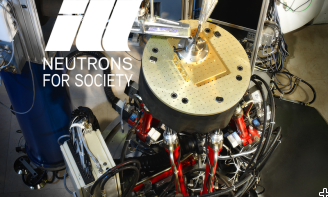Copyright 2012 neutronsources.org | All rights reserved. | Powered by FRM II | Imprint / Privacy Policy
Neutrons point the way to optimised crash-tolerant automotives
Date: 20/07/2017
Source: www.ill.eu
- Boron steel has crucial applications in the automotive industry; it is attractive due to the reduced automobile weight and increased passenger safety it provides.
- Understanding the effect spot welding has on residual stress in boron steel is crucial for informing new welding methods that have a less damaging impact on the material and its lifetime, leading to the production of optimised automotive components.
- The correlation between spot welding and residual stress in boron steel was experimentally determined for the first time with neutron diffraction experiments conducted at the Institut Laue-Langevin (ILL).
Press-hardened boron steel is an ultra high-strength steel used across a variety of industries, with a particularly important application in the automotive industry. A large proportion of car manufacturers use boron steel for structural components and anti-intrusion systems in automobiles, as it provides high strength and weight-saving potential, allowing for stronger yet lighter cars, with increased passenger safety.
In the automotive industry, a major joining method is resistance spot welding, with several thousand welds being made on a single car. Spot welding exposes the boron steel sheet directly underneath to very high temperatures, causing the metal to exceed melting temperature and then rapidly solidify upon cooling. This results in a heat-affected zone, where surrounding material contracts and microstructures are altered.
It is important to understand the exact effects spot welding has on boron steel, as the heat-affected zones can exhibit reduced hardness, which can in turn shorten the material’s lifetime. To investigate the correlation between hardness and residual stress, measurements must be taken on the same spot weld. Therefore, a non-destructive method of measuring residual stress must be used so that the weld can be sectioned afterwards for the hardness tests. Non-destructive methods include electron, X-ray and neutron diffraction; the latter was the chosen method as the neutron beam has a cubic gauge volume, which is the most suited for the given sample’s geometry.
A recent collaboration between the ILL, WMG at the University of Warwick, Tata Steel, and the Engineering and Physical Science Research Council (EPSRC) conducted a study to investigate the correlation between boron steel hardness and residual stress. Tata Steel provided the boron steel sheets for the experiments, which were carried out by WMG researchers on the ILL’s SALSA (Stress Analyser for Large-Scale Applications) beamline. Neutron diffraction was chosen as the method for measuring residual stress in this study due its ability to penetrate heavy materials such as boron steel, and the finer resolution it provides. Hardness distributions were measured on the same welds.
This study experimentally determined for the first time a strong correlation between reduced hardness in heat-affected zones of boron steel spot welds and increased residual stress. The findings have indicated the need to develop new welding methods that do not have the same damaging impact as spot welding, especially because there is nothing that can be done to avoid the reaction of reduced hardness when spot welding is used on boron steel.
Dr Neill Raath, Research Fellow at WMG, and principal researcher of this study says: “Our future work will look into two methods that can evade this issue: magnetic pulse welding, which does not use heat and as such does not cause a heat-affected zone, and post-welding heat treatment, which reverses the reduction in hardness caused by spot welding. This will be of particular importance to industries that use boron steel, namely the automotive and farming industries, as well as materials developers who can use the data for modelling and destructive simulations in their own work.”
Dr Thilo Pirling, ILL scientist leading the SALSA team, says: “The SALSA beamline is a well-suited instrument for this study, as it specialises in determining residual stresses in a broad range of engineering materials, including steels. It also allows larger structures to be placed within the beamline. In this case, the non-destructive nature of the technique allowed the correlation of interest to be analysed effectively, as hardness profiles could be determined on the same weld following the neutron diffraction tests for residual stress.”
This study has evidenced the need for alternative welding methods that can lengthen the lifetime of the widely-used boron steel to its full potential. With several thousand welds being made on a single car, future work on non-destructive welding techniques and post-spot welding treatments will enable the boron steel components of cars to maintain their hardness and avoid residual stress. Importantly, this will ultimately provide top-tier passenger safety in stronger yet lighter vehicles.
Original Publication
N. D. Raath, D. Norman, I. McGregor, R. Dashwood, D. J. Hughes
Effect of Weld Schedule on the Residual Stress Distribution of Boron Steel Spot Welds
Metallurgical and Materials Transactions, June 2017, Volume 48, Issue 6, pp 2900–2914.
DOI: 10.1007/s11661-017-4079-9
Contact
AprilSix Proof, Mrs Frances Cassidy.
T.: +44 (0)20 3141 2978
